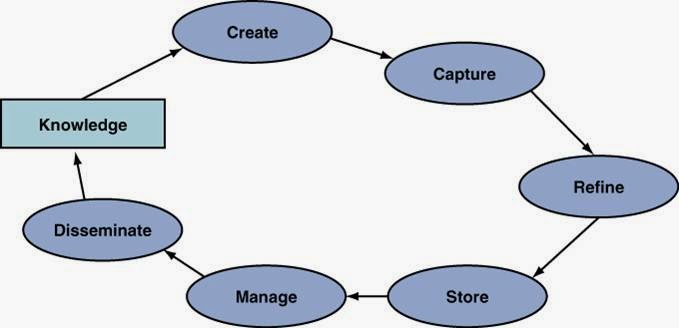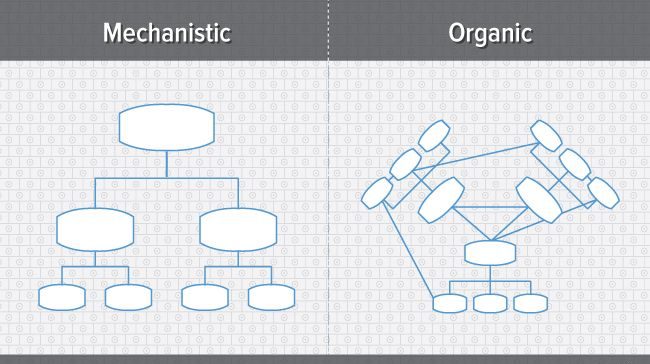In 1940s, Austrian economist Joseph Schumpeter argued that large firms would be more effective innovators and he point out that better able to obtain financing for R&D projects and better able to spread costs of R&D over large volume. Large size firms may also enable for greater economies of scale and learning effect and taking on large scale or risky projects. However, large firms might also be disadvantaged at innovation because; R&D efficiency might decrease due to loss of managerial control Large firms have more bureaucratic inertia More strategic commitments tie firm to current technologies Small firms often considered more flexible and entrepreneurial. Many big firms have found ways of “feeling small” because break overall firm into several sub-units and can utilize different culture and controls in different units. A large firm gains experience in choosing and developing innovation projects, it may learn to make better selections of projects that Continue reading
Modern Management Concepts
Concept of Agile Manufacturing
The Agile Manufacturing was presented in the first time at the publication in the USA of a report entitled 21st Century Manufacturing Enterprise Strategy. So, it has been introduced as a method of increasing competitive advantage in response to increasingly competitive global markets. Agile concept focuses on the fast response to changeable of customer demand. The key component in agile manufacturing is flexibility. The agile manufacturing methods can be adjusted and consolidated into companies of any size to ensure the growth and success. The changeable of customer and technological requirements that make the manufacturers develop agile supply chain capabilities in order to be competitive. So, many companies use the flexibility and agility to respond the customers’ requirement and markets demand in real time. The new concept of agility manufacturing need to secure competitive advantage from the production process that can be both efficient and responsive. Agility can be defined as Continue reading
Knowledge Management Cycle
In today’s business scenario where there is lot of competition, only source of lasting is Knowledge. It is argued that knowledge management is a necessity due to changes in the environment such as increasing globalization of competition, speed of information and knowledge aging, dynamics of both product and process innovations, and competition through buyer markets. Knowledge management promises to help companies to be faster, more efficient, or more innovative than the competition. Also, the term ‘‘management” implies that knowledge management deals with the interactions between the organization and the environment and the ability of the organization to react and act Various researchers then gave the various definitions on Knowledge Management and still it’s the buzzword today. Knowledge management is the process through which we can manage human centered assets efficiently and effectively. The function of knowledge management is to guard and grow knowledge owned by individuals, and where possible, transfer Continue reading
Mechanistic Organizational Structure – Definition and Features
The structure of any organization has a clear impact on both employee behavior and its performance. On the other hand, an organizational structure provides an overview about the hierarchy of levels, roles and responsibilities, authorities, communication channels, etc. It is of utmost importance to understand the definition of the organizational structure since it affects both employee behavior and organizational performance. Organizational structure is understood as a method consisting of responsibilities and power allocated amongst members and how work procedures are carried out among them. It also includes the layers of hierarchy, centralization of authority, and horizontal integration. However, an organizational structure is a multi-dimensional construct which illustrates the division of work (roles or responsibilities including specification), departmentalization, centralization, complexity, communication or coordination mechanisms including standardization, formalization and flexibility. An important type of organizational structure can be identified as mechanistic organizational structure. Mechanistic organizational structure is hierarchical and bureaucratic by nature. Continue reading
Concept of Green Marketing
In today’s business world, environmental issues plays an important role in marketing. All most all the governments around the world have concerned about green marketing activities that they have attempted to regulate them. Many people believe that green marketing refers solely to the promotion or advertising of products with environmental characteristics. Generally terms like Phosphate Free, Recyclable, Refillable, Ozone Friendly, and Environmentally Friendly are some of the things consumers most often associate with green marketing. In general green marketing is a much broader concept, one that can be applied to consumer goods, industrial goods and even services. For example, around the world there are resorts that are beginning to promote themselves as “ecotourism” facilities, i.e., facilities that specialize in experiencing nature or operating in a fashion that minimizes their environmental impact. Thus green marketing incorporates a broad range of activities, including product modification, changes to the production process, packaging changes, Continue reading
Innovation – Definition and Types
Innovation is an important concept to understand as a manager and for an organisation as a whole. Used in the correct manner, innovation can give an organisation the competitive advantage they need to be a success in their market. Firstly, it is useful to look at innovation in general. Innovations are ideas that are developed into new products or processes. They result in changes that customers recognize as new. Put in even simpler terms, innovation is the process of making improvements by introducing something new. Therefore, the two words that sum innovation up are ‘process’ and ‘new’. Defining Innovation Innovation is doing things in new ways in order to achieve significant results and make a huge difference in performance compared to others. Innovation’s goal is to have a positive change, to make someone or something better. Testing and evaluation of ideas is critical in achieving this goal. The ideas that Continue reading


